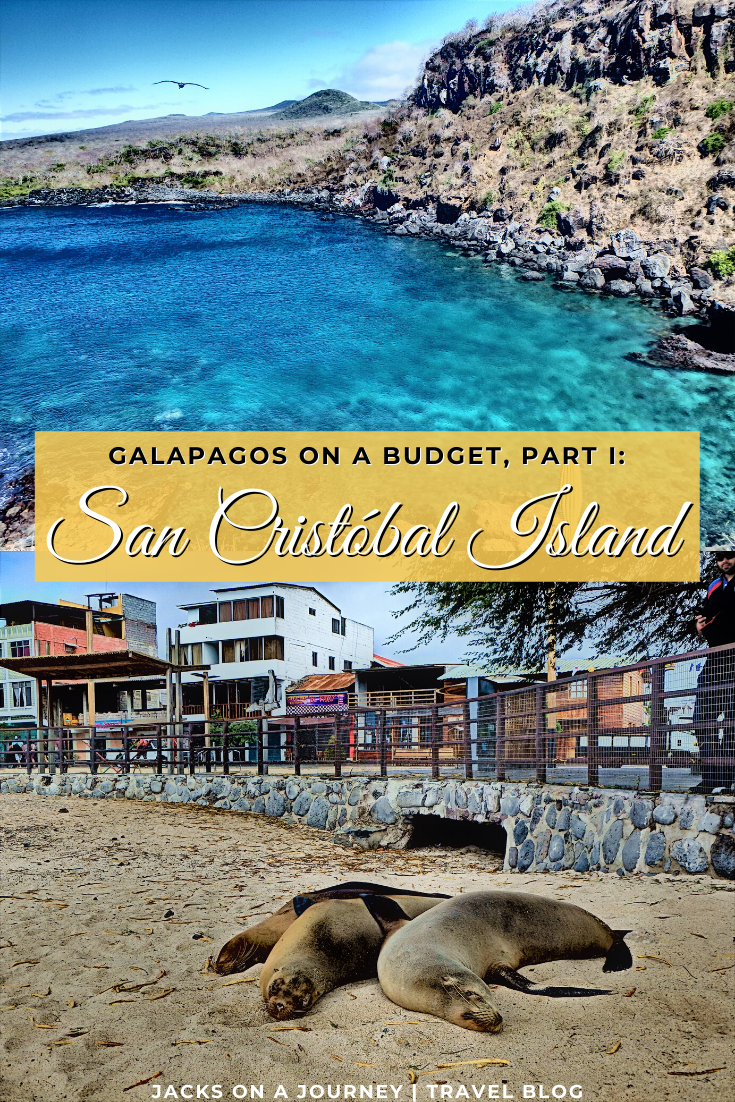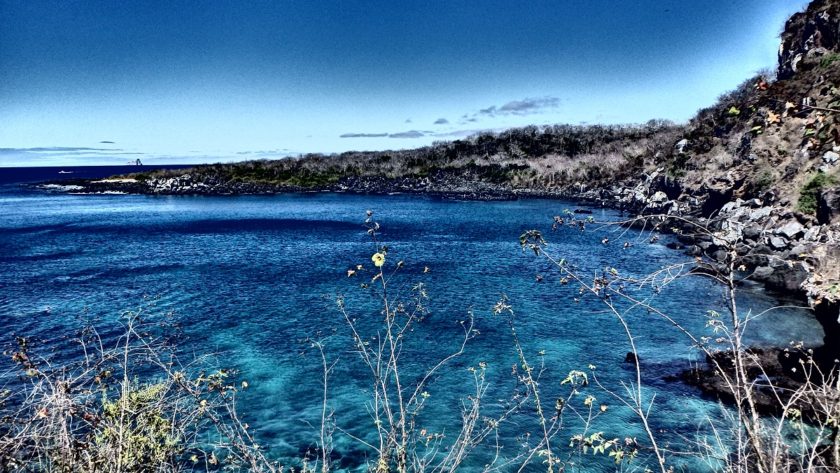Many travellers embarking on a budget backpacking adventure around South America would dismiss the Galapagos as being too expensive. Don’t get us wrong, it’s hardly cheap BUT it might not be as bad as you think.
From my stance, there was no way we were travelling to Ecuador and not going to the Galapagos. It has literally been on my bucket list forever and when would this opportunity come round again? Luckily Rhys never needs too much convincing.
So we’re here to share with you how we explored the incredible Galapagos Islands on a budget!
The first trick is exploring by foot. Meaning: do not book a cruise. This is what typically costs people a fortune. We’re talking thousands!
We spent a total of 12 days in Galapagos, dividing our time equally among the three main islands: San Cristóbal, Isabela and Santa Cruz. Over this time we spent around $1,000 USD each. One hundred percent worth it in our eyes.
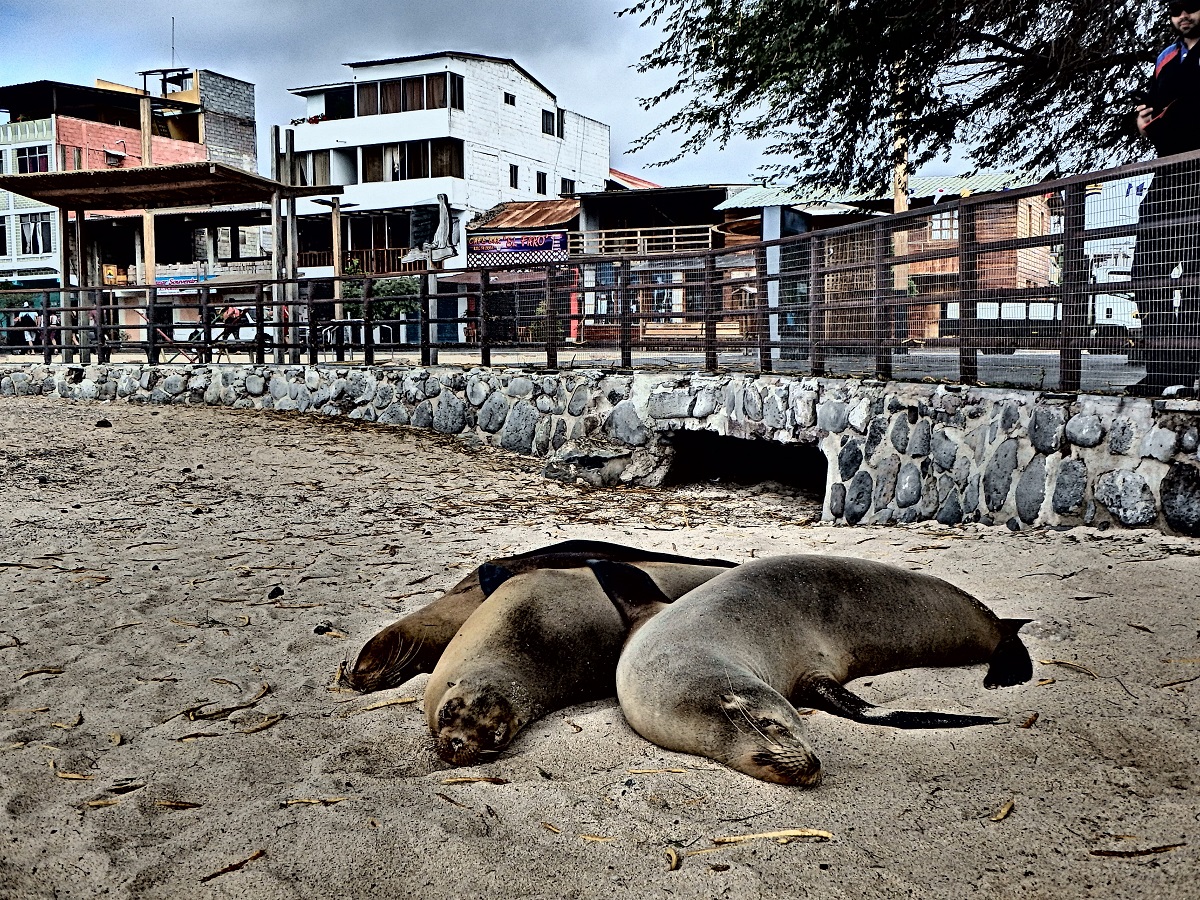
The island of San Cristóbal served as our introduction to the wonderous archipelago and within only a few hours of exploring, I swear we were completely in love with the place!
It’s instantly lived up to the wildlife hype. There were sea lions everywhere, some even snoozing along the malecon. There were finches darting through the air and marine iguanas basking in the sun, equally unfazed by our presence.
At first we thought we could have spent our 12 days simply watching the sea lions right there in town! But we soon found there is plenty more to do on this tiny island, not all of it involving sea lions.
What to do in San Cristóbal
Centro de Interpretación
We figured the best way to start our trip in the Galapagos was to learn a little more about the archipelago. This is best done at San Cristóbal’s Interpretation Centre, said to be the best of the three island’s centres.
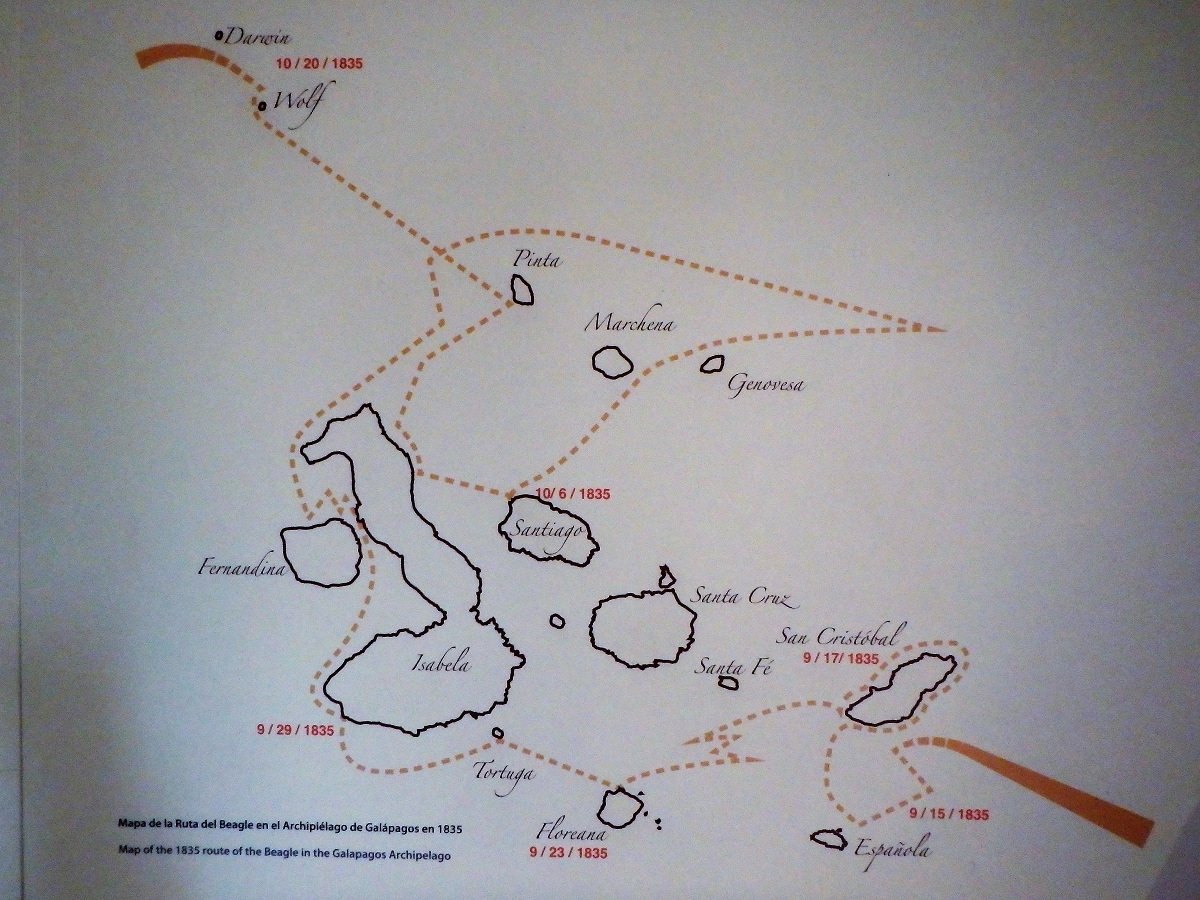
It was very insightful, with numerous information boards interestingly focusing on the relationship between humans and the Galapagos.
This included the history since the islands were first discovered and their biological significance. Also the ecological threats they currently face and the conservation efforts being made to preserve them. Definitely worth a visit.
Punto Carola
We did not find a single soul on this idyllic beach just a short 10 minute walk from town. It was by no means quiet though!
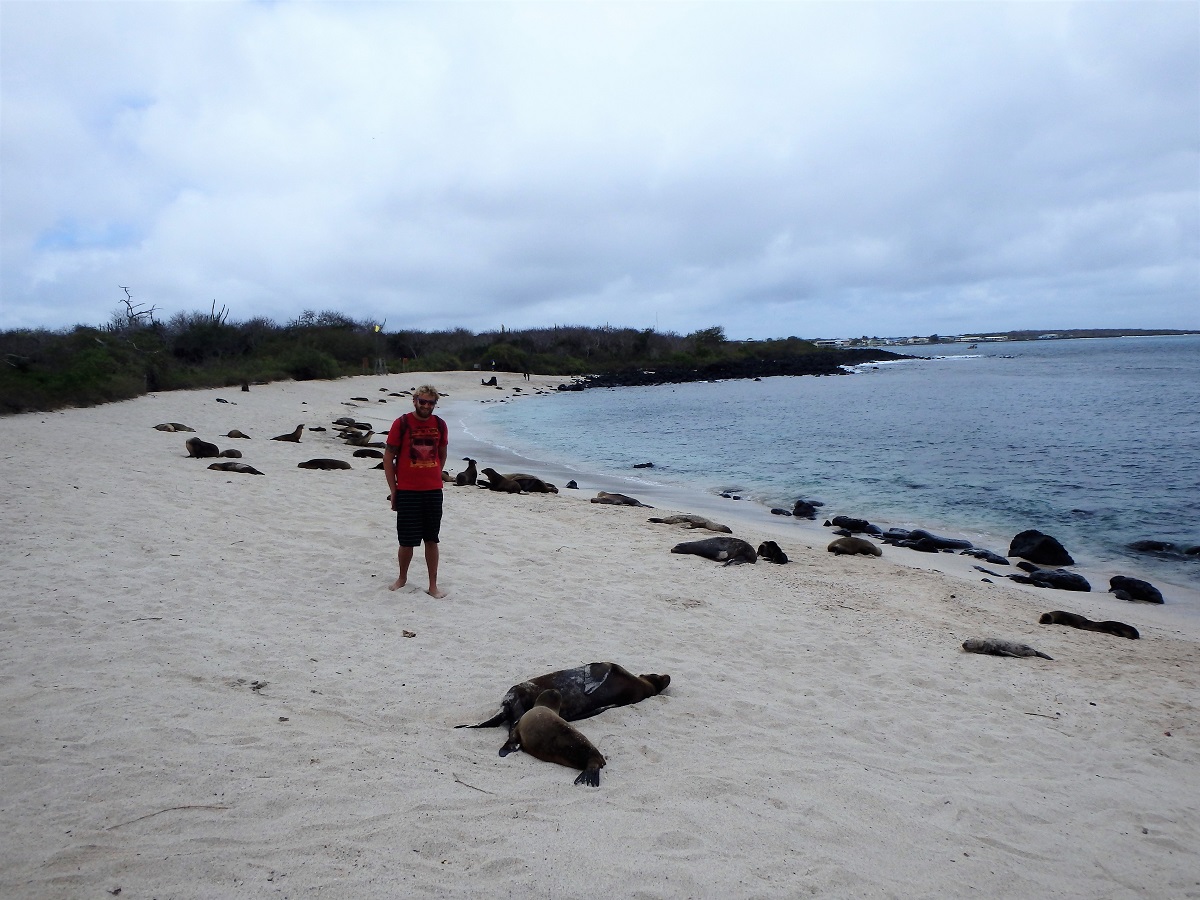
There were just so many sea lions. Some huddled in groups snoozing (looking adorable I might add) while those more restless were hilariously entertaining to watch. They would bounce, bark, squawk, groan and grunt at all those that would tolerate them.
Just sit there and enjoy the spectacle.
Playa Mann
Another fantastic beach just a few minutes walk from the town.
Assuming the clouds stay away, it’s a great spot to sit and watch the sunset. We even brought a couple of beers from across the road to enjoy there (a cheap way to enjoy the evening).
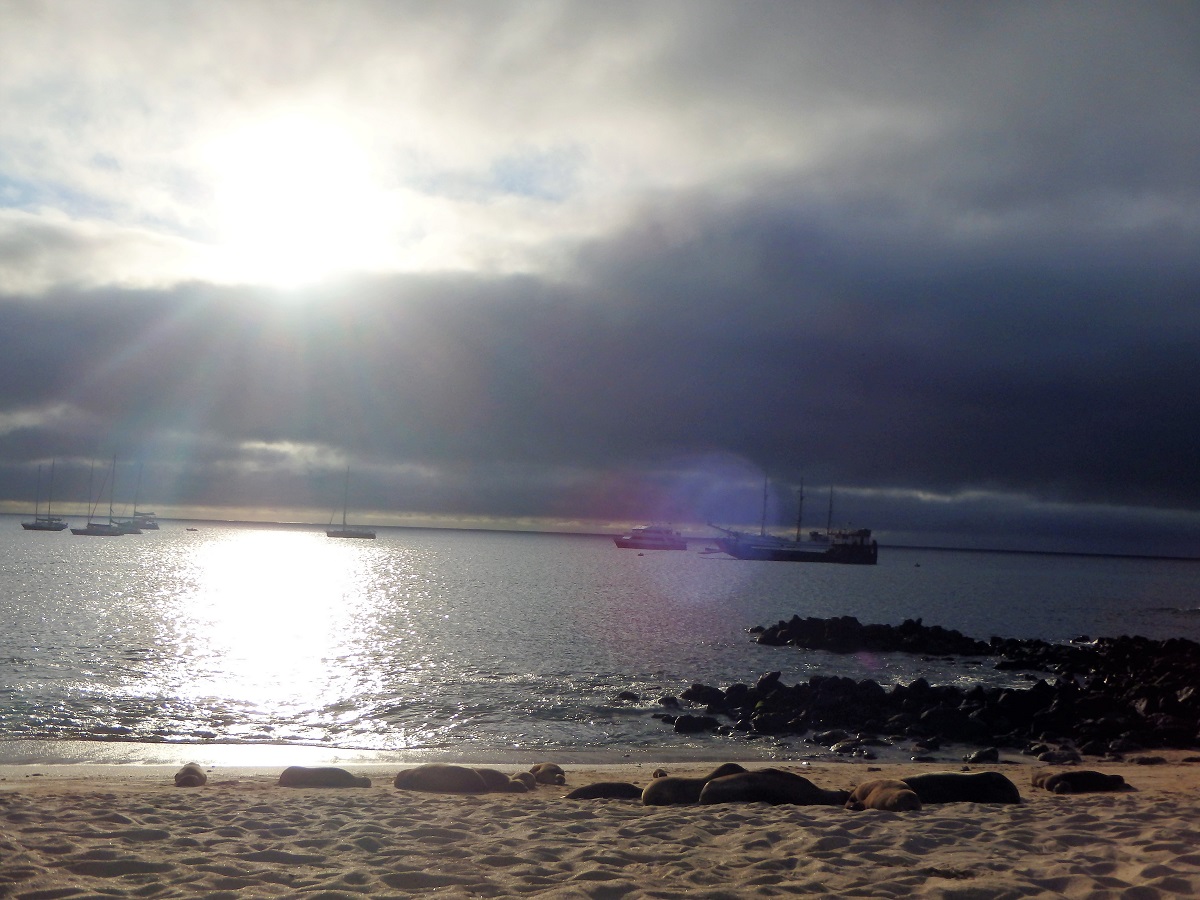
Oh, and yes there are more sea lions.
This beach in particular we will remember fondly as we witnessed a sea lion give birth, literally 20ft away from us! We couldn’t believe how lucky we were to witness such a spectacle.

La Loberia
Yet another gorgeous and remote beach on San Cristóbal is La Loberia. Unlike the aforementioned beaches, this one is a decent spot for snorkelling as it is relatively sheltered thanks to it’s barrier reef.

Rhys tried his luck snorkelling and had some amazing interactions with sea lions. I stayed on the beach wrapped in layers trying to keep warm, ha!
Despite the beautiful sunshine the winds made it very chilly. We managed a couple of hours before the clouds rolled in and it began to drizzle (just as we were pulling out our picnic). This is why it’s slow season in October…
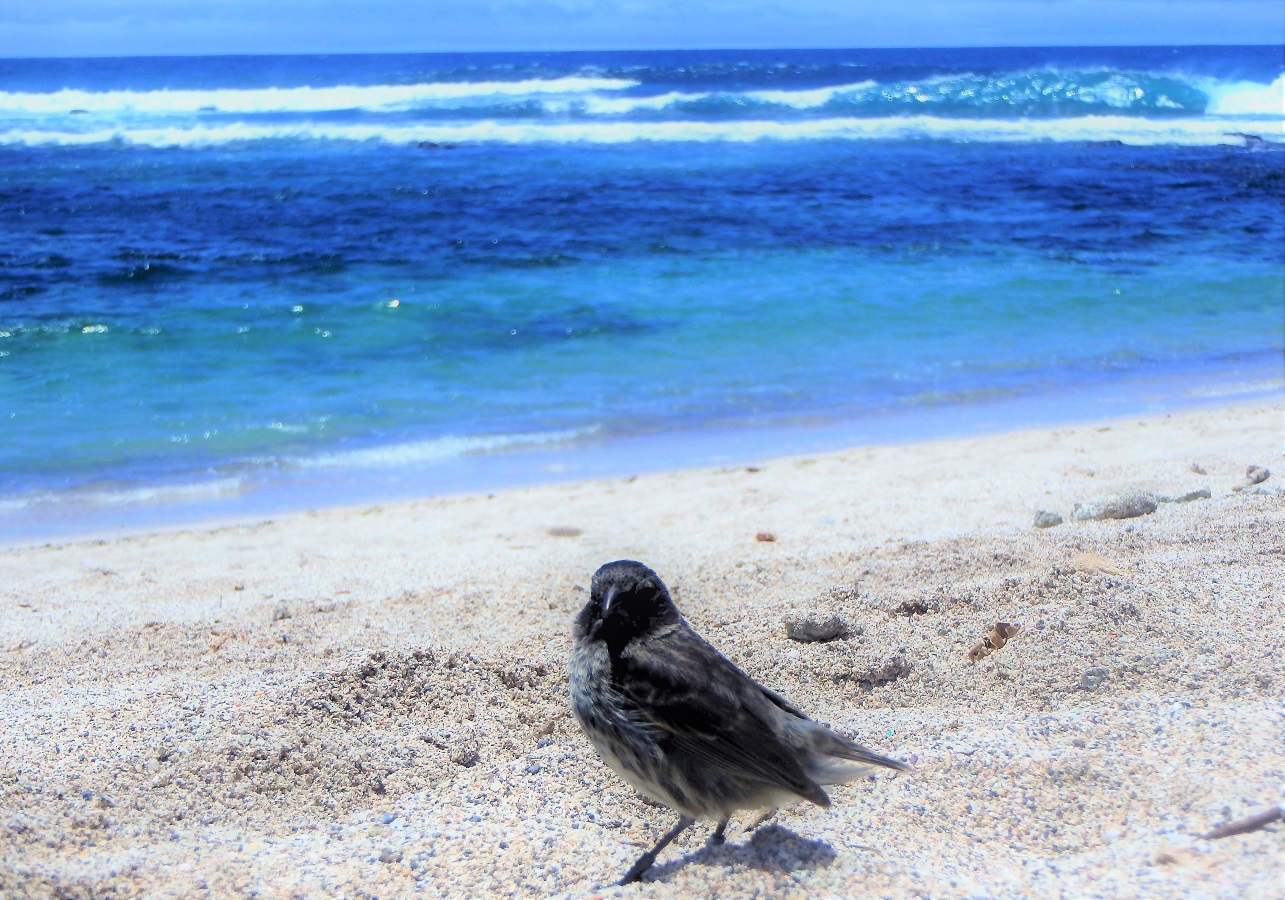
La Loberia is a little further out of town, taking around 30 minutes to walk. There is the option to take a taxi, one-way, for $3 USD.
Obviously we are all about budgeting so we walked. We would recommend this regardless as you never know what you might stumble across here!
Cerro Tijeretas (Frigate Hill)
Another 30 minute walk from town (the opposite direction to La Loberia) is the picturesque Tijeretas Cove.
We first recommend climbing the steps for what we would argue has to be the best view we saw in the Galapagos. Awe-inspiring when we would think about where we were.
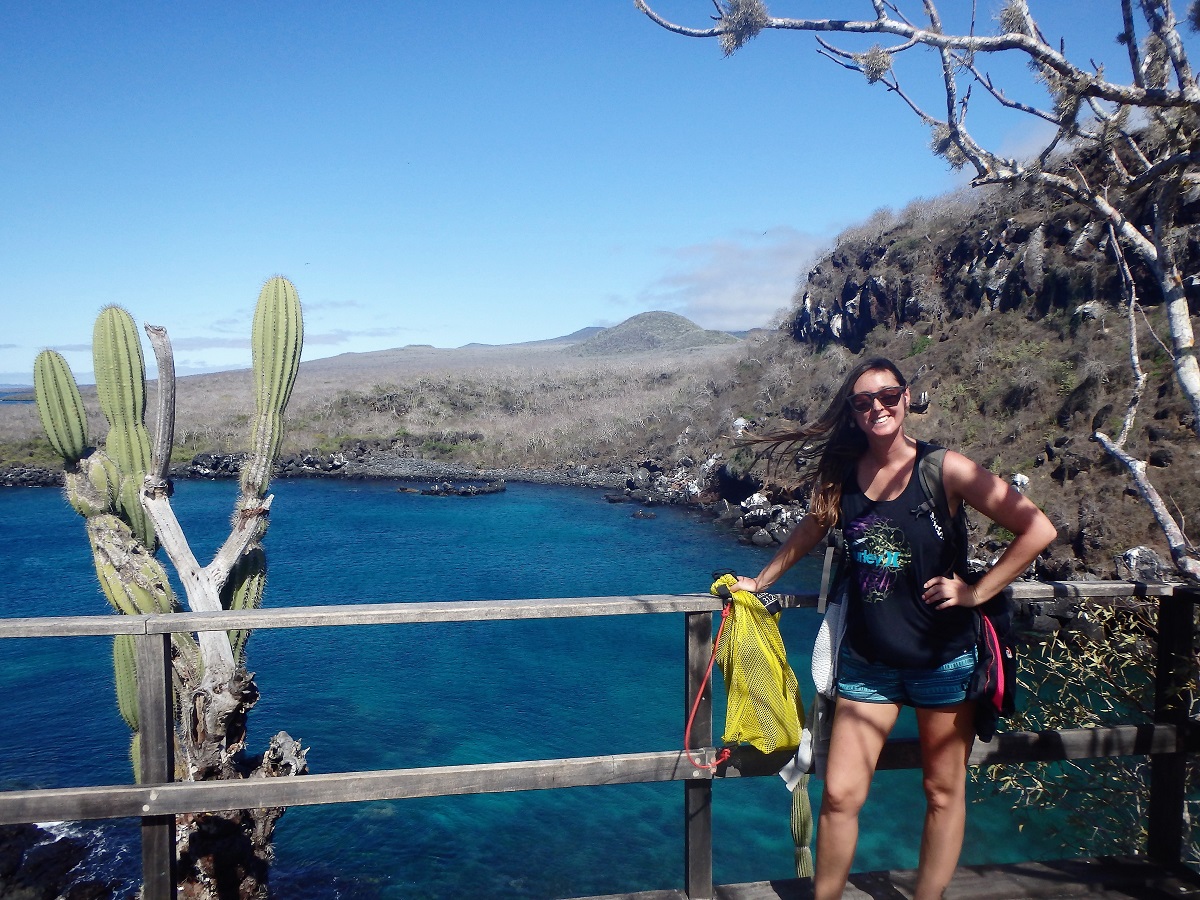
Down the steps towards the lagoon entrance is a statue to the island’s founder, and evolutionary legend, Charles Darwin.
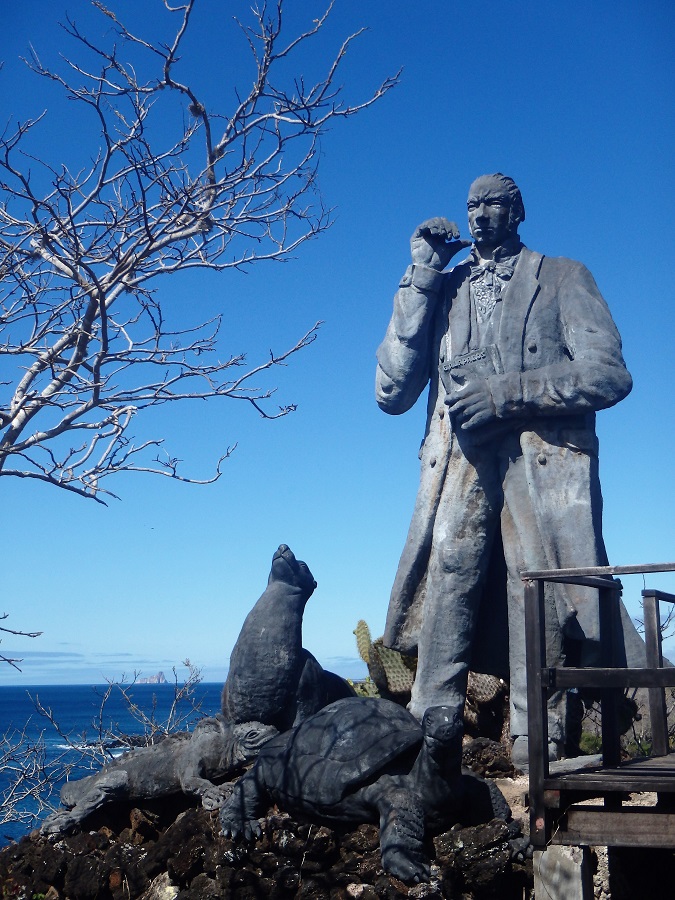
The cove itself is an excellent place to snorkel! Although it took us a few attempts thanks to cold rain and a stubborn sea lion.
Tip: If like us, you find a ginormous sleeping sea lion blocking your path to the water, be cautious… We had read online that gentle clapping should move them along. Not always the case, we can tell you! This grumpy male literally tried chasing us up the hill. It was both terrifying and hilarious.
We were much more apprehensive around them after this experience. I mean they are wild animals after all and should always be respected.
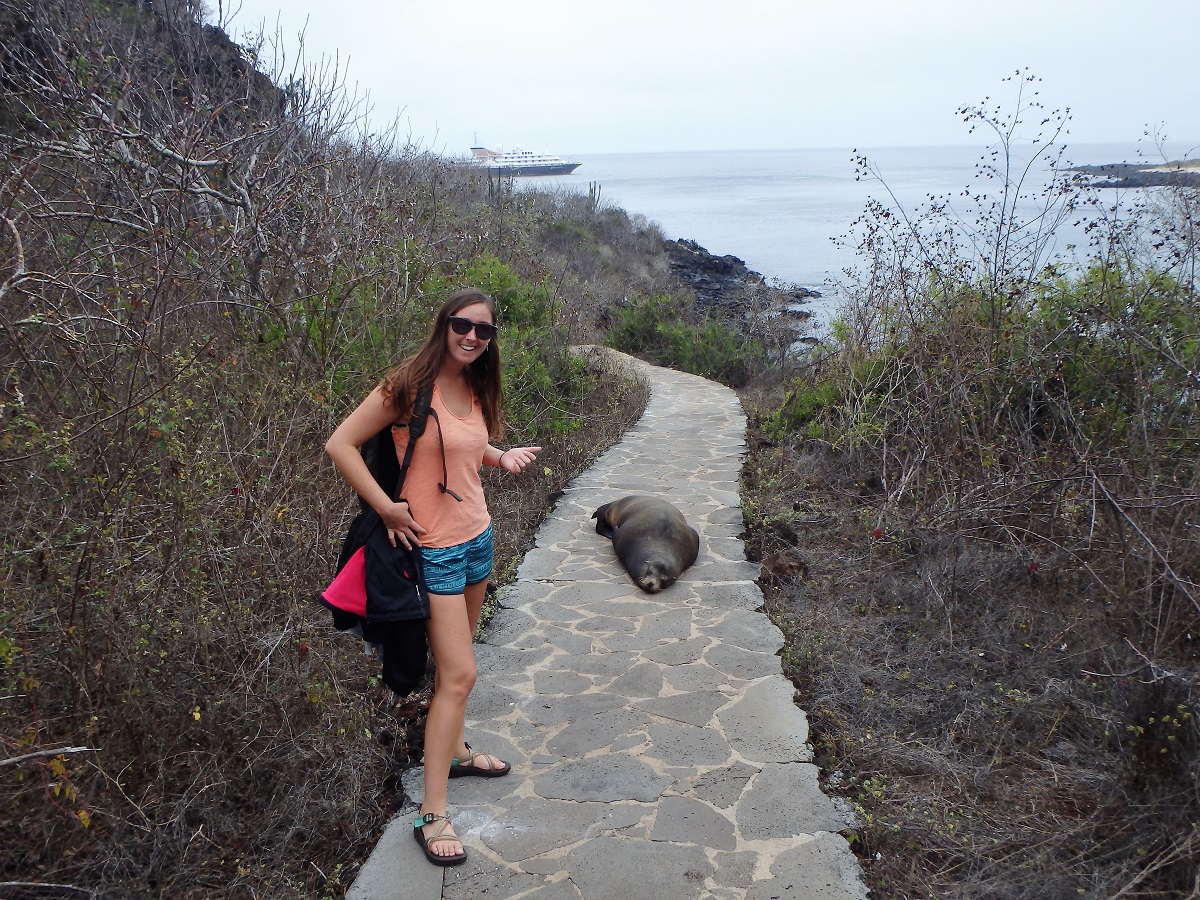
Luckily our second trip to the lagoon proved much more successful! No sea lions blocking our path and beautiful sunshine (which made the water seem a little less cold, ha).
We snorkelled along side turtles, playful sea lions and even witnessed the marine iguanas feeding on the algae-covered rocks underwater. It felt like we were in a David Attenborough documentary!
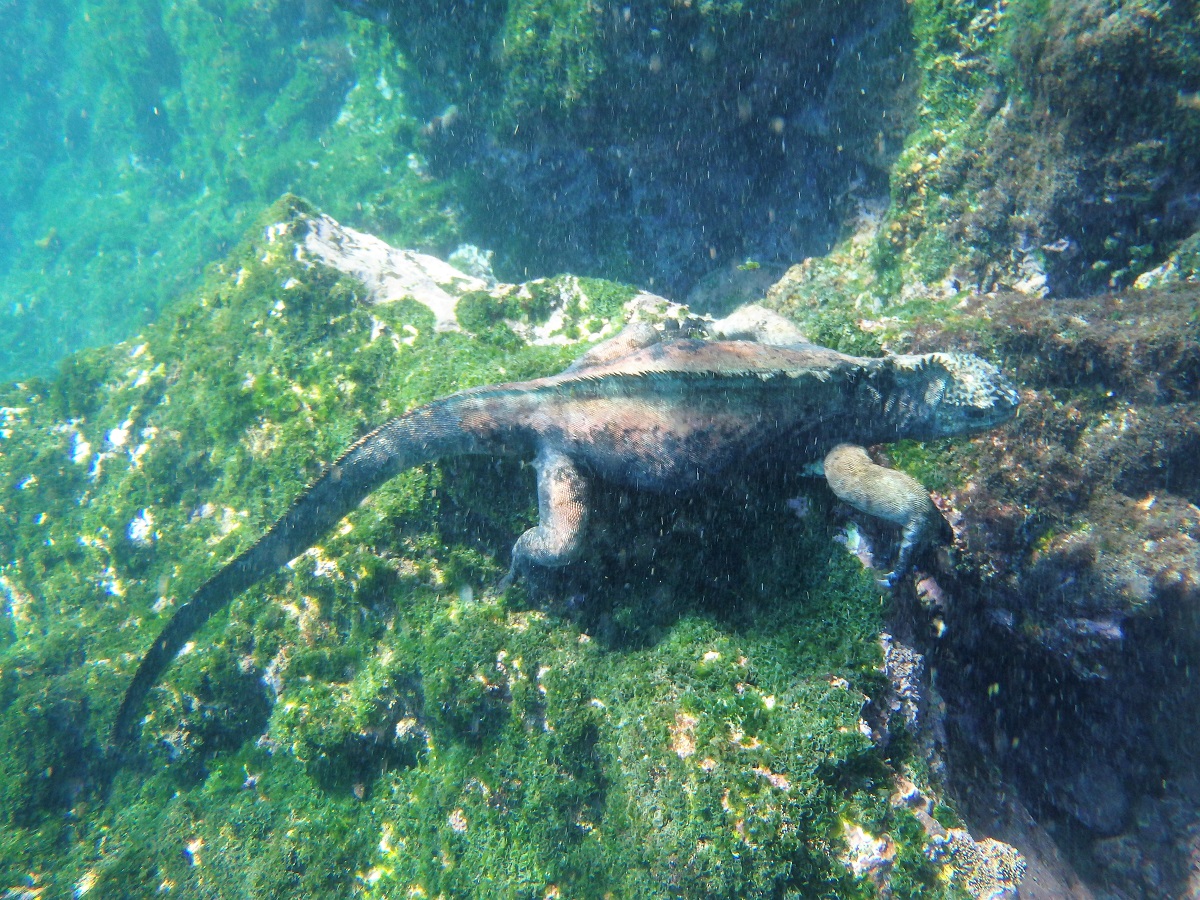
Tip: Snorkel equipment is $5 USD a day to rent. We strongly recommend paying an extra $5 for a wetsuit if visiting during the cooler months. The water is a chilly 68F/20C in October.
Lagoon El Junco
To see a bit more of the island by land, there is the option to get out of town to see El Junco Lake.
The lake is located within a small volcanic crater and is the largest freshwater lake of the archipelago. An abundance of birds are said to thrive here and there are awesome views over the island thanks to the 660m elevation gain.
Sadly for us, this was not the case. Despite the sun shining in town, as we approached higher ground inland, we found ourselves shrouded in thick fog.
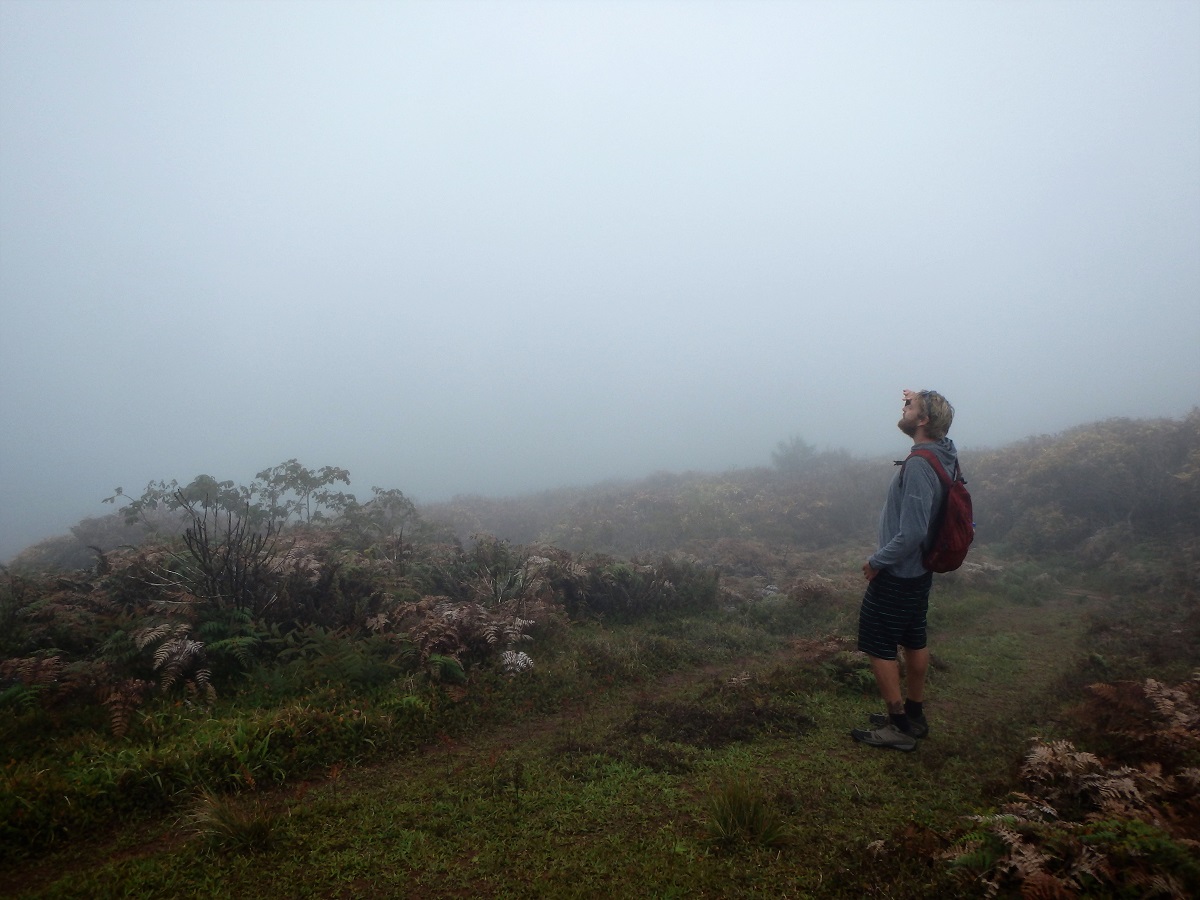
Not ones to be negative, we still found the mini-adventure fun. It reminded us a lot of walks back in Wales!
We made our way here via a taxi from town costing $25 USD return. Note there is a 20 minute uphill walk from the car park to reach the lagoon. Maybe not totally worth it on a cloudy day such as ours but it was an experience none the less.
Tip: While we decided against it, a more popular option from town is to pay $50 USD and rent a taxi for the day. In these cases travellers will include visits to the island’s tortoise centre and Chinco Beach.
El Leon Dormido (The Sleeping Lion)
While there is plenty to admire from the land, we believe that to truly experience the Galapagos you have to get out on a boat. Remember, what you see above the water is just half the wonder!
We enjoyed so many fantastic days in Galapagos but our trip out to El Leon Dormido (aka Kicker Rock) has to be our most memorable. I sometimes reference it as perhaps our biggest highlight in the whole of South America, and that’s saying something!
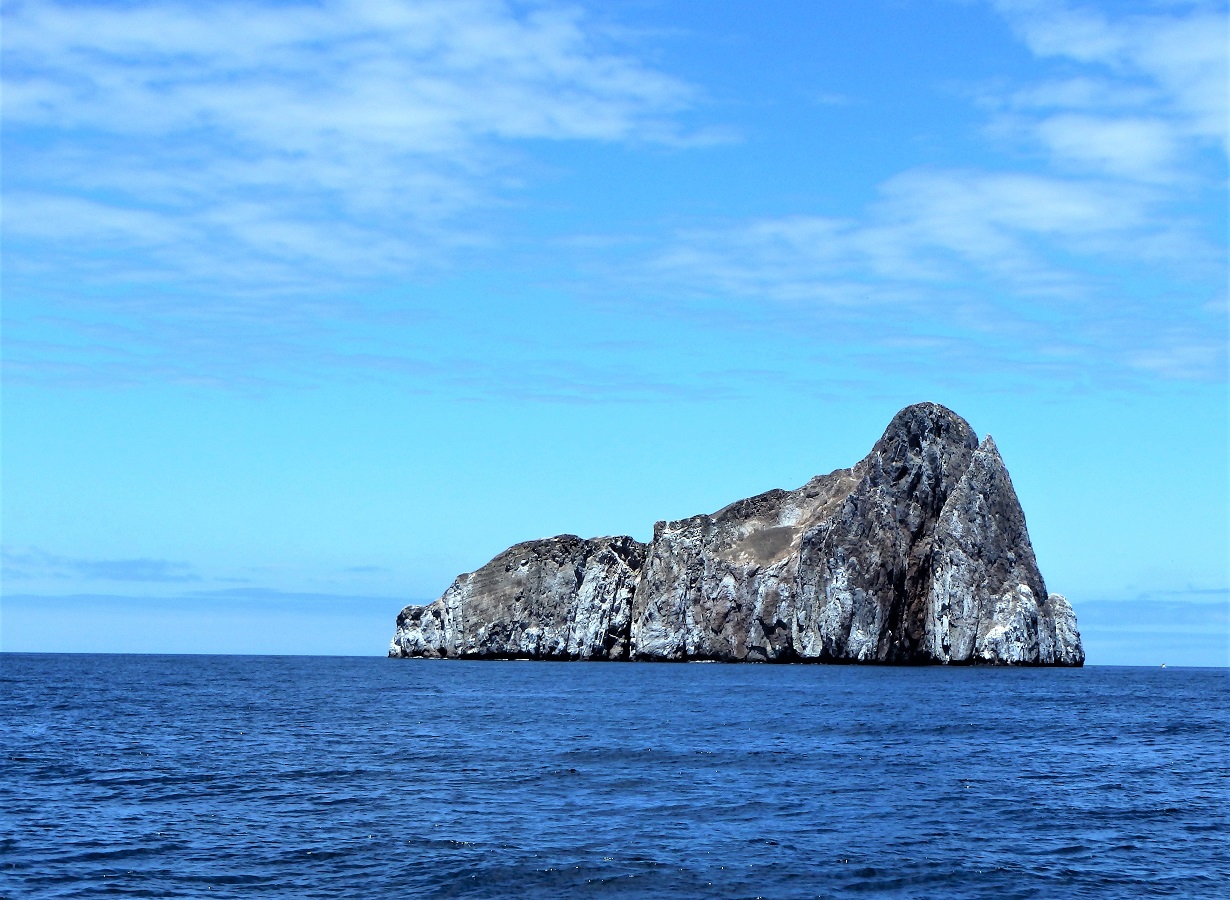
I think it helped we had luck on our side with the weather. The morning clouds over the dock completely cleared as we headed out to sea.
Before reaching Kicker Rock we made a stop to the remote Playa El Manglecito, a small secluded beach only accessible by boat. Here we tested our respective gear and I experienced just how freezing the water was out here (why I was so grateful for the sun).
Even this short swim to the shore was great. I spotted a Mexican hogfish, a 4ft long cornet fish, a chain moray and nearly jumped out my skin thanks to a sea lion playing chicken with me! The beach itself was littered with the usual marine iguanas too.
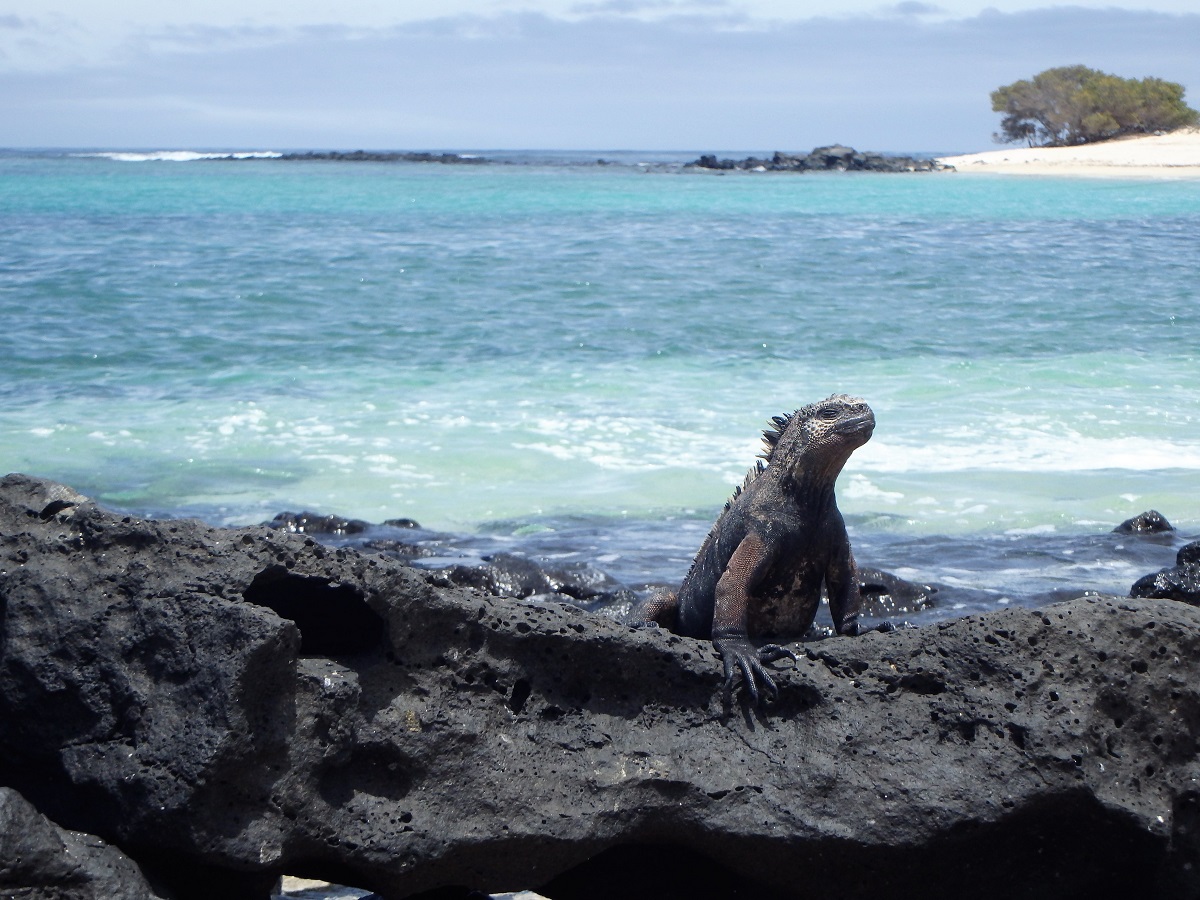
I was beyond excited when we finally made it to Kicker Rock. Rhys and the divers were first in, while myself and the other snorkellers shortly followed.
The highlight of the trip
We first swam within a large crevice that was swarming with silversides. This false safe-haven for the bait fish made them an easy target for the greedy sea lions. Watching the bait ball disperse and then re-group as the predators darted among them was completely transfixing! Again, nature documentary stuff!
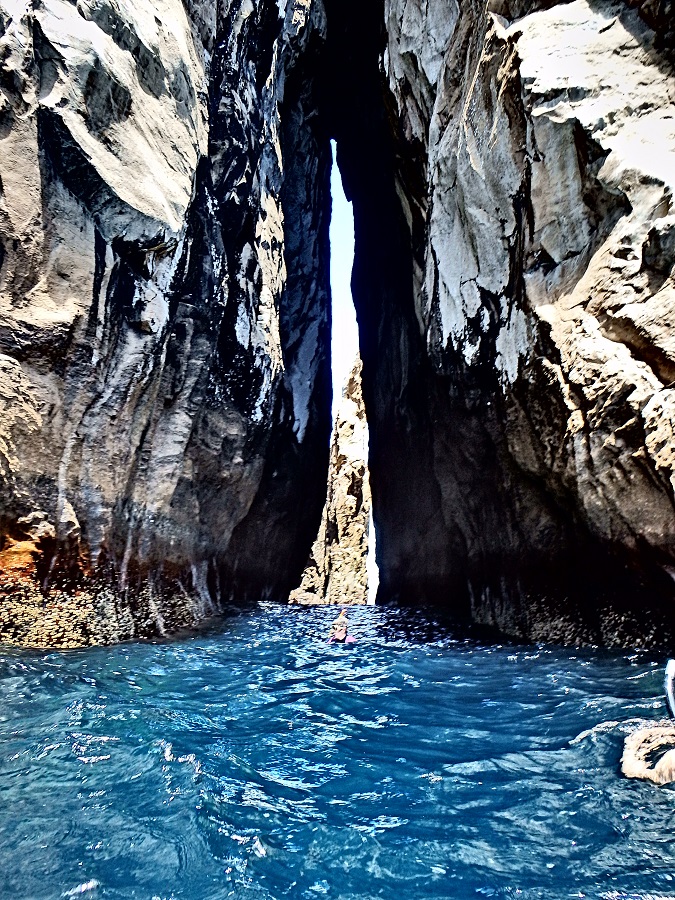
Already thinking it couldn’t get much better, it did. Seconds after emerging from the crevice I had my first ever hammerhead encounter! Needless to say, there was a lot of excited squealing.
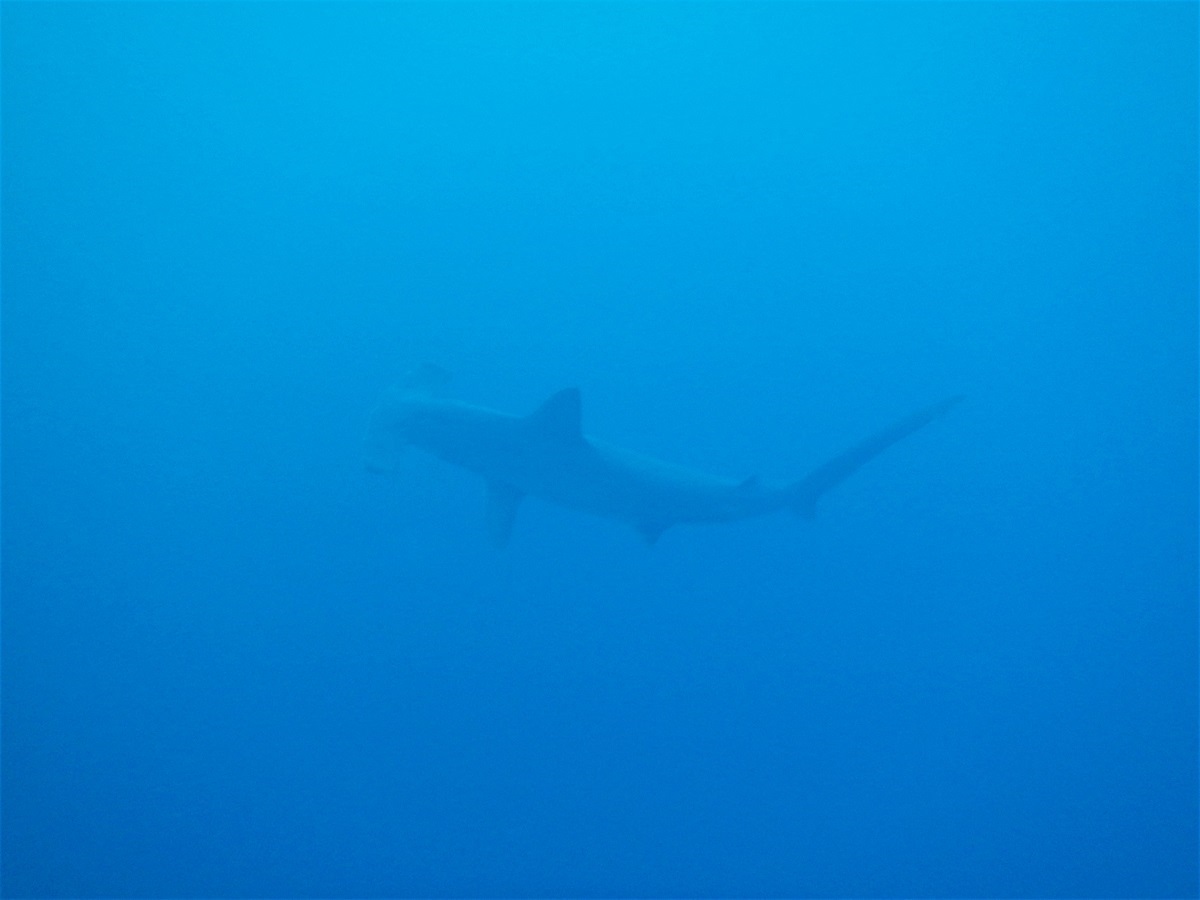
I have also never seen so many turtles in such a short space of time! I was honestly on Cloud 9 as we returned to the boat for lunch and to share our stories.
Better again, was we still had a second session to go this time swimming around the northern end of the large monolith.
We must have been barely five minutes back in the water as we found ourselves alongside at least 50 sharks! My mind was blown ten times over. It was so far beyond anything I could have hoped for from this trip.
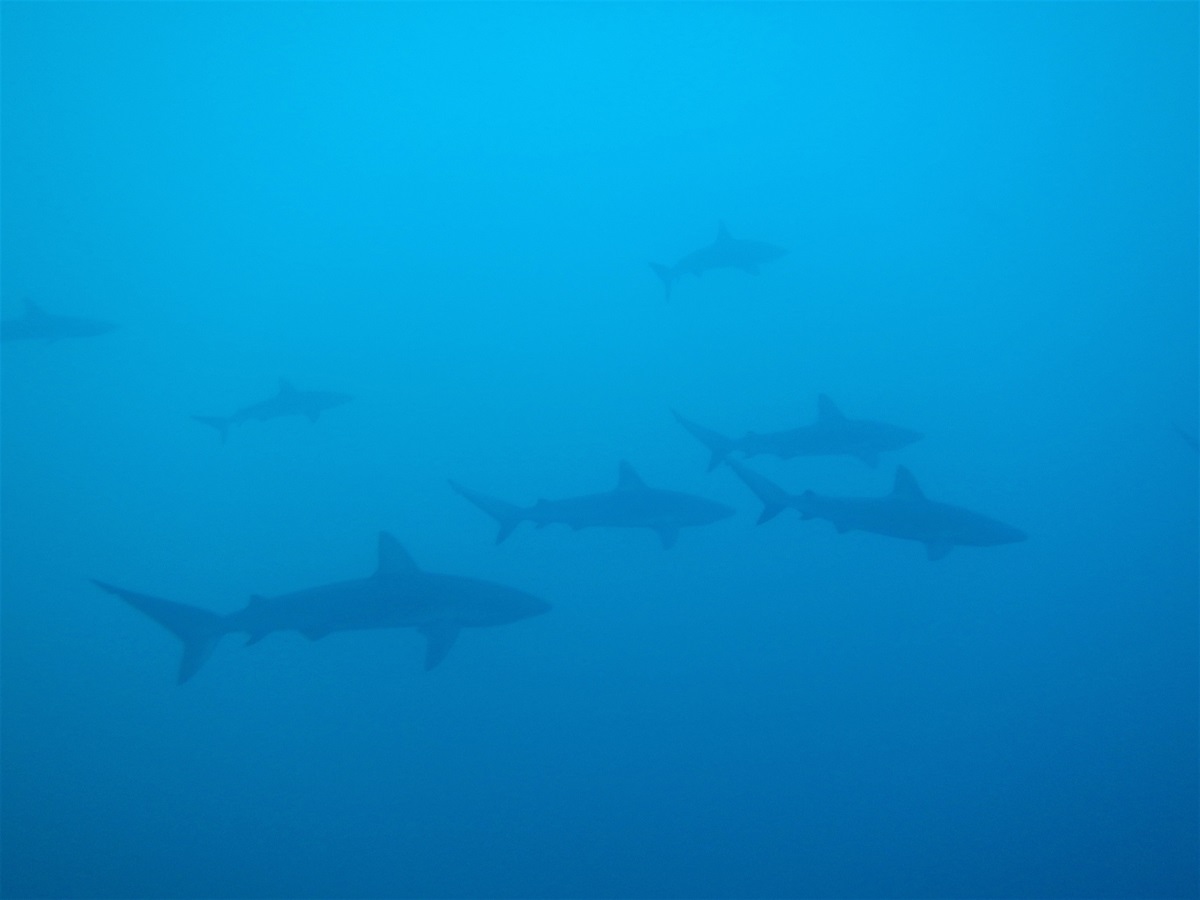
I think it is fair to say that we were exceptionally lucky that day. My snorkel guide advised that this many sharks was not a common sight here. Especially as we saw even more than the divers (although thankfully Rhys also ticked hammerheads off his bucket list that day).
Regardless of the sharks, we would still recommend any backpacker or traveller to splurge and make this trip. It’s still a fraction of the cost of doing a liveaboard cruise!
Our whole day trip cost us $120 USD and $160 USD for snorkelling and diving, respectively. The price included lunch, snacks and a decent-size catamaran despite only being 12 of us (although this was likely because it was quiet season).
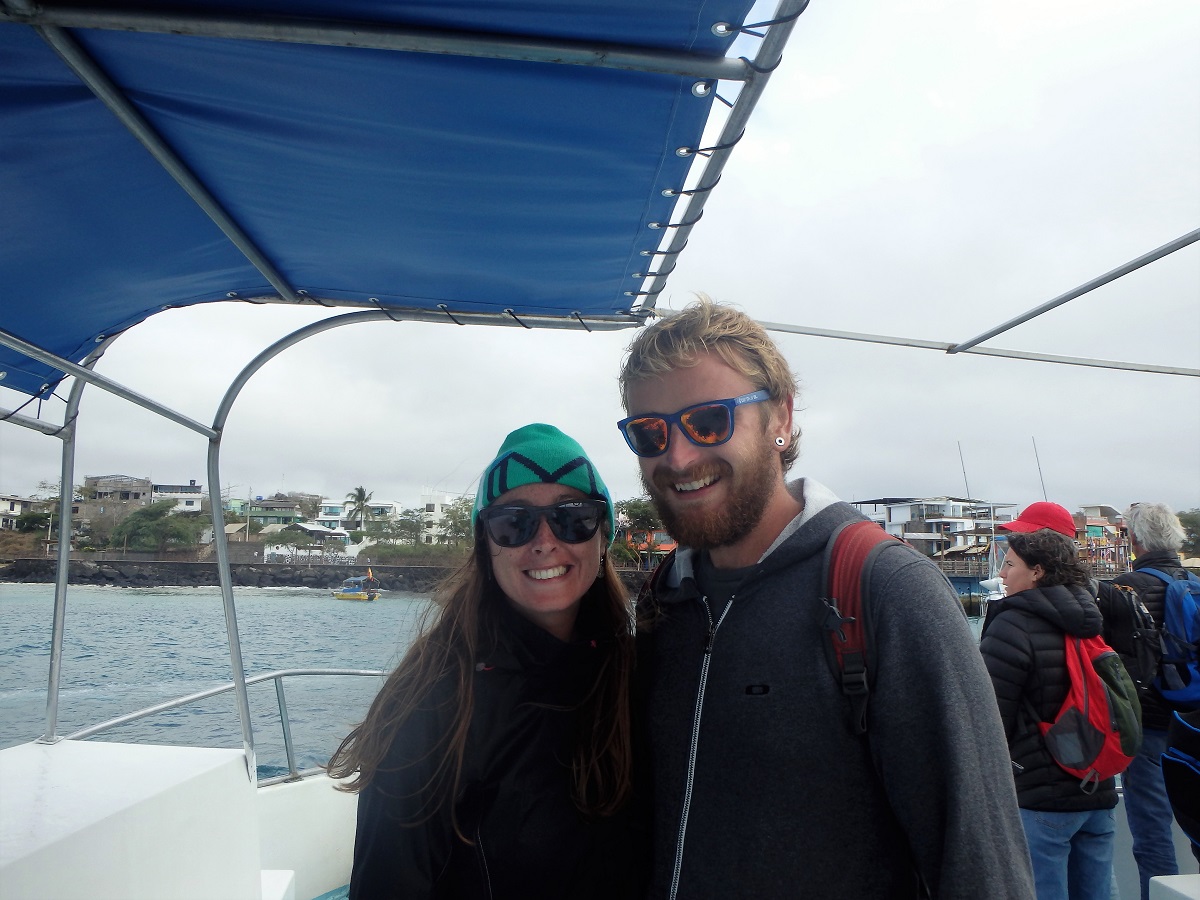
Tip: For selecting an operator, we recommend doing your own price comparison around town. It may be different depending on the day.
We ended up booking with Scuba Eden who were… okay. I say ‘okay’ because we left 45 minutes late, they nearly forgot Rhys’ dive gear and the dive guide tried to stop Rhys doing his safety stops when returning to the boat. Plus he never checked Rhys’ certification card.
But this is South America so… you know. Take everything with a pinch of salt!
My snorkel guide, and overall guide on board the boat, was brilliant but he was not solely employed by that operator.
Apparently, local tour guides in Galapagos have to be specially certified and so are independently hired by operators to join their trips. Meaning, our guide would have likely been with another operator the following day. I guess that was another stroke of luck for us that day!
Where to stay on San Cristóbal
There is the option to turn up with nothing booked and simply wander to compare a few hostel prices (since a number of them do not operate online). However I am not a huge fan of this and like to be more organised.
This is why through most of South America, we relied so heavily on Hostelworld. Sadly it was not very helpful for Galapagos but, thankfully, Booking.com became our saviour (even booking last-minute in Quito’s airport).
We were super chuffed to get a private room for three nights for $72 USD at Casa de Jeimy. That’s $24 a night between us! We definitely call that Galapagos on a budget.
Another bonus was the short five minute walk to the waterfront and a great view from the hostel’s top floor terrace.

Tip: If you do opt to book on arrival, be sure to enquire about agua caliente. At least for me, being able to have a hot shower is pretty key.
Getting to San Cristóbal
San Cristóbal was our first destination within the Galapagos so we flew direct from Quito. Our return flights (with the exit flight departing from Santa Cruz) cost us $300 USD each with LATAM airlines.
Note: Flight prices range from ~$300-$450 depending on the time of year. We paid less during slow season.
In addition to flights, it is important to note a couple of additional fees. Travellers will need to pay an extra $100 USD per person as a ‘Galapagos National Park Entrance Fee’ and $20 USD each for a visa. These are payable at the airport before flying to the archipelago.
Note – The entrance fee is set to double in August 2024 to $200USD!!
For those flying to and from Isla Baltra on the more popular Santa Cruz island, then San Cristóbal can be reached via a direct ferry that runs between the islands. The ferry costs $25 USD per person and departs each island twice a day (You can find the daily schedule here online).
If you are making your way to San Cristóbal from Isabela Island, then note that you will need to take two separate ferries (the first being to Santa Cruz).
A final note
Before a bit of research, it may seem like this bucketlist destination is an unattainable dream. Especially for budget travellers and backpackers (like us!) to South America.
We only hope we manage to convince you that this is not the case as we share how we explored the Galapagos on a budget. Be sure to check out Part II and Part III of our island-hopping adventure!
Like this blog? Pin it!
